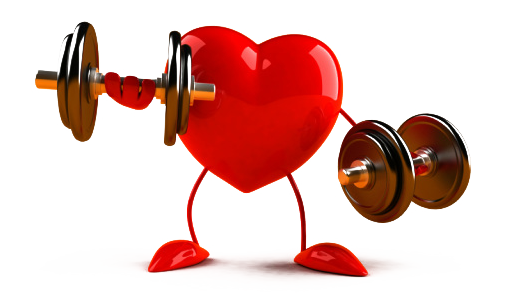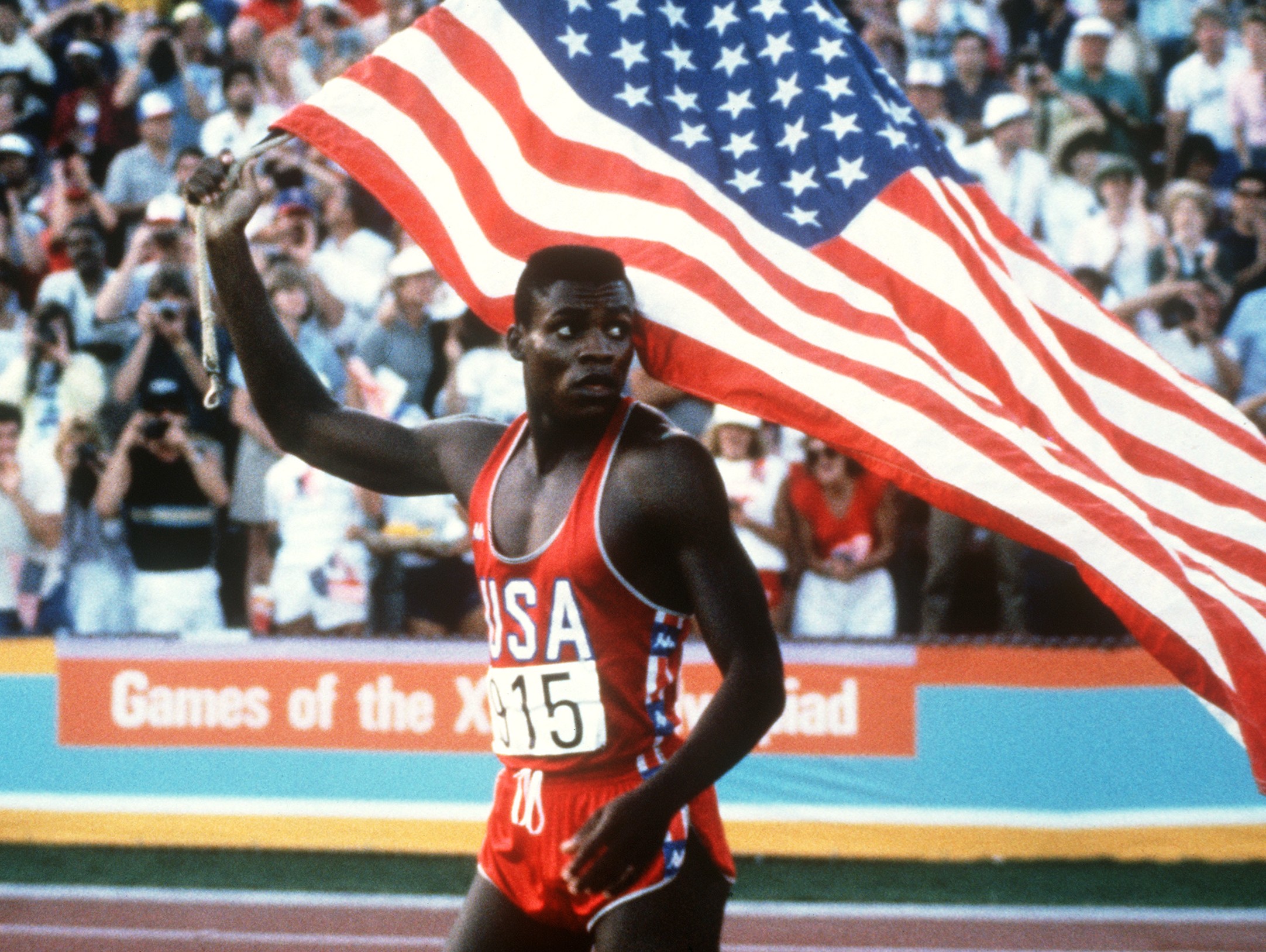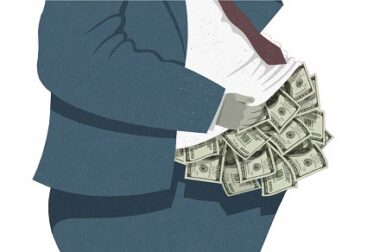The circulatory, or cardiovascular, system refers to the vast network of organs and blood vessels that act as both a nutrition-delivery and waste-removal system for the body. The main components of this system are the heart, arteries, capillaries and veins. The arteries carry blood from the heart to the body organs, while the veins carry it back to the heart. Nutrients, oxygen and hormones are delivered to every cell in the body, while waste products like carbon dioxide are removed. The circulatory system keeps working because of the pumping pressure from the heart to push blood through the arteries; movement of the body helps pump it back up the veins. Valves throughout the veins ensure it’s a one-way system.
Cardiovascular disease (CVD) is the nation’s number one killer of both men and women. However, there are steps you can take to reduce the risk of developing heart disease. It is widely accepted that regular physical activity is beneficial for cardiovascular health. Frequent exercise is robustly associated with a decrease in cardiovascular mortality as well as the risk of developing cardiovascular disease. Physically active individuals have lower blood pressure, higher insulin sensitivity, and a more favorable plasma lipoprotein profile.
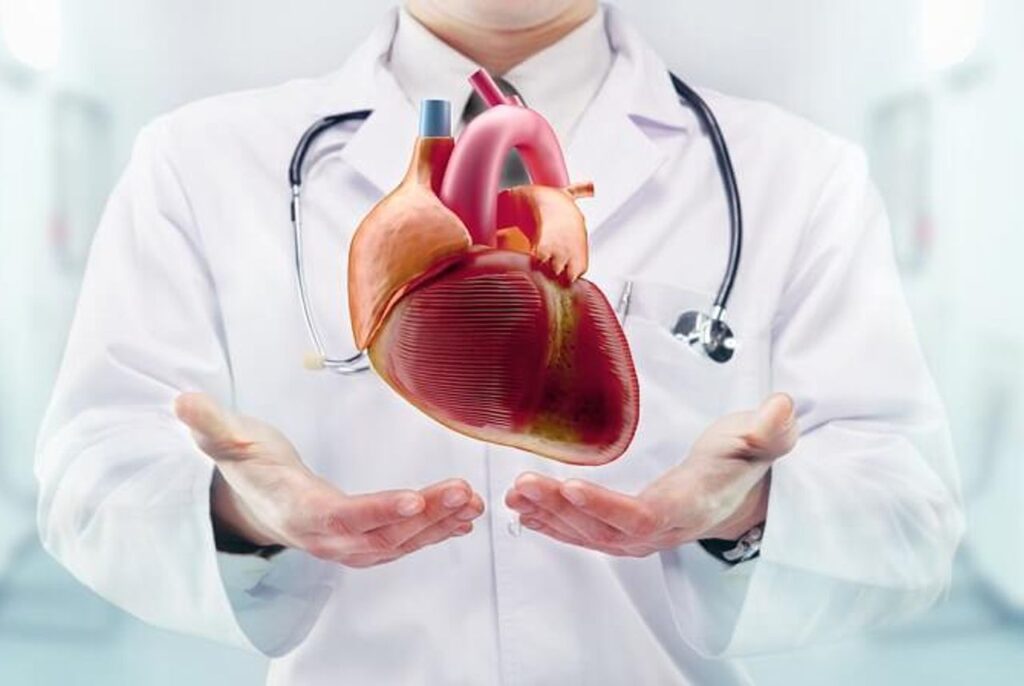
Among the many risk factors that predispose to CVD development and progression, a sedentary lifestyle, characterized by consistently low levels of physical activity, is now recognized as a leading contributor to poor cardiovascular health. Conversely, regular exercise and physical activity are associated with remarkable widespread health benefits and a significantly lower CVD risk. Several long-term studies have shown that increased physical activity is associated with a reduction in all-cause mortality and may modestly increase life expectancy, an effect which is strongly linked to a decline in the risk of developing cardiovascular and respiratory diseases.
Effect of cardio & strength exercises on Heart?
The heart is a muscle which becomes more efficient with exercise. When you exercise, your muscles help to circulate blood through the body taking some of the strain and effort off the heart. Not as much work is needed to pump blood and the heart becomes stronger over a period of time. As you begin to exercise, your heart will contract faster and circulation will increase, which gets oxygenated blood to your muscles quicker. As the demand for blood increases, the heart is going to try to meet the demand by increasing the heart rate and also by increasing the force at which it contracts. The increase in oxygen delivery is twofold: your heart will have more beats per minute, and a more forceful contraction each time it beats so it can pump a greater amount of blood throughout the body.

When performing cardio/aerobics, blood flow is directed toward working muscles and away from areas that aren’t doing much (such as your arms during running, or the digestive tract). There is increased blood flow, and blood volume returning to the heart. As the heart registers a larger blood volume, over time the left ventricle adapts and enlarges. This larger cavity can hold more blood, and ejects more blood per beat, even at rest. Over time, with chronic cardio training our resting heart rate drops because each beat delivers a bigger burst of blood, and fewer beats are needed. This takes work off your heart and is why cardio exercise is recommended for heart health.
Strength training exercise works the heart in a completely different way. At any given moment, certain muscles are contracting and relying predominantly on type two muscle fibers, which are responsible for giving us a great looking body and making us stronger. As the muscles contract—say the arm muscles during a bicep curl—they press and close the blood vessels that flow through them. This leads to increased blood pressure in the rest of the body and the heart has to fight against a stronger force to push blood out. The heart adapts to this by increasing the thickness of the left ventricle wall. This thickness derived from chronic weight training is healthy, whereas the thickness from chronic high blood pressure is not.

Exercise also stimulates the production of new blood vessels. As we make more blood vessels, there are more places for blood to flow, which results in more efficient circulation. Cardiovascular exercise increases the number of new blood vessels while resistance training increases the size of those blood vessels.
What are the risks of exercise?
During exercise, there is a transient increase in the risk of having a cardiac-related complication (for example, a heart attack or serious heart rhythm disorder). However, this risk is extremely small. For adults without existing heart disease, the risk of a cardiac event or complication ranges between 1 in 400 000–800 000 hours of exercise. For patients with existing heart disease, an event can occur an average of once in 62 000 hours. Importantly, the risk of a cardiac event is significantly lower among regular exercisers. Evidence suggests that a sedentary person’s risk is nearly 50 times higher than the risk for a person who exercises about 5 times per week. Stated simply, individuals who exercise regularly are much less likely to experience a problem during exercise. Moreover, contrary to popular view, the majority of heart attacks (approximately 90%) occur in the resting state, not during physical activity.
Exercise is therefore considered to be extremely safe. Nevertheless, it is a good idea to be aware of the warning signs or symptoms that may indicate a problem: chest discomfort (pain or pressure in the chest, jaw, or neck, possibly radiating into the shoulder, arm, or back), unusual shortness of breath, dizziness or light-headedness, and heart rhythm abnormalities (sensations of heart beat skipping, palpitations, or thumping). If one of these symptoms occurs, medical attention should be sought immediately.
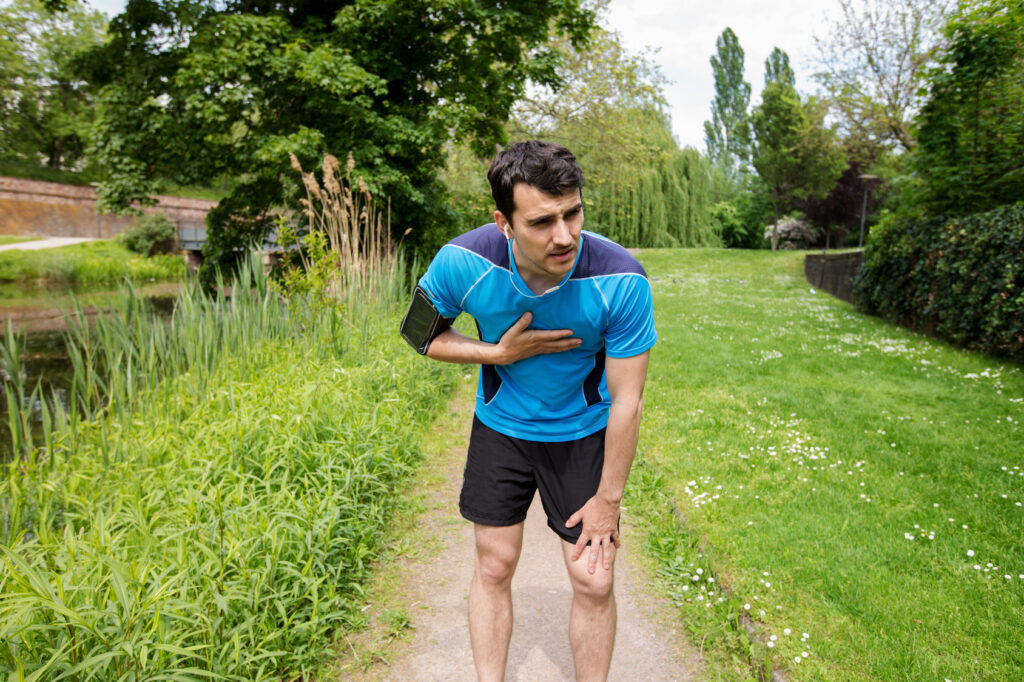
Heart risks associated with extreme exercise
It’s well known that exercise is good for you, and with so many different types of workouts available to us today, just about anyone can find something that they love. But, some extreme athletes can push past healthy limits. Chronic extreme exercise training and competing in endurance events can lead to heart damage and rhythm disorders. People with genetic risk factors are especially vulnerable.
How much exercise?
Even if physical activity has not been a part of your routine, everyone has to start somewhere. Walking, jogging, and swimming are examples of aerobic exercises that benefit your heart. Perform light exercise such as walking for at least 30 minutes 5 days a week. Alternatively, perform moderate exercise such as running or bicycling for at least 30 minutes 3 days a week.

Exercise safety precautions & tips
Get an expert’s opinion
First, if you currently have heart disease or are over 40 years of age and have 2 or more risk factors (immediate family member with heart disease before age 55, cigarette smoking, high blood pressure, abnormal cholesterol levels, diabetes, sedentary lifestyle, or obesity), you should consult your physician before starting any type of exercise. Before starting any new exercise regimen, or if you want to increase the intensity of your current program, talk to your doctor or sports medicine specialist first. As with any major change, there are risks that should only be assessed by an expert familiar with your circumstances. The doctor may be also able to point you in the direction of a good cardiac rehabilitation program and give you pointers about exercises to try and which to avoid. There must be a compulsory screening for all the athletes to identify those at risk of sudden cardiac death due to an electrical or structural heart abnormality which can lead to heart attack or heart failure during or after physical activity.
Extreme, long-term endurance exercise puts equally extreme demands on the cardiovascular system. A study done on marathon runners found that even after finishing extreme running events, athletes’ blood samples contain biomarkers associated with heart damage. These damage indicators usually go away by themselves, but when the heart endures extreme physical stress over and over, the temporary damage may lead to remodeling of the heart or physical changes such as thicker heart walls and scarring of the heart. Moreover, research found evidence that high intensity exercise can acutely increase the risk for sudden cardiac arrest or sudden cardiac death in individuals with underlying cardiac disease. This can also increase the risk of heart rhythm disorders, especially for the minority who have hypertrophic cardiomyopathy or coronary heart disease.
Start slowly and build up gradually
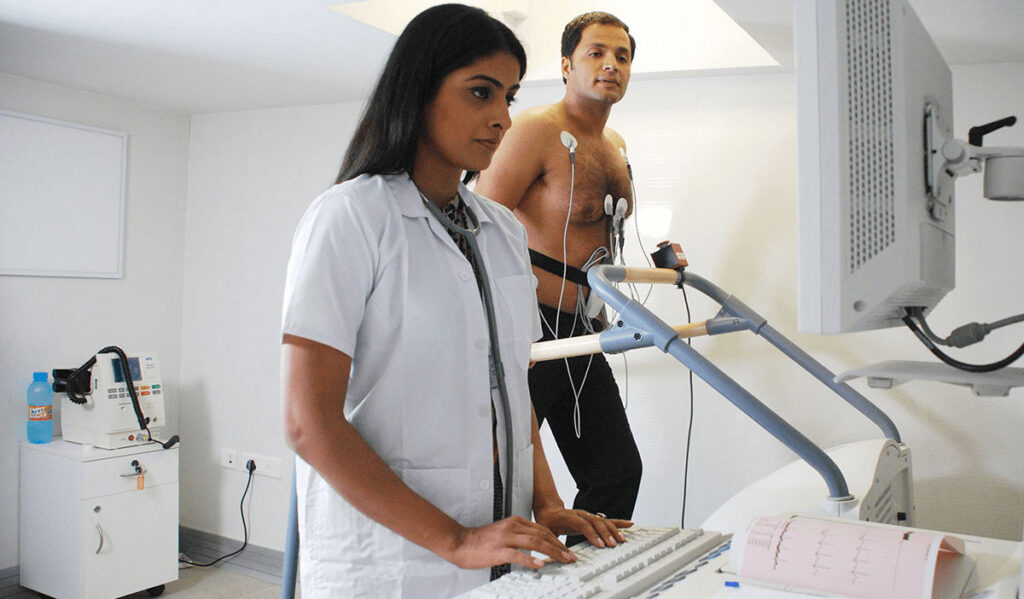
When starting or changing an exercise program, it’s important to start slowly and to gradually increase the amount and intensity of the exercise. Everyone has a different starting point, and that’s just fine. Some people start with walking around the room a few times a day. The key is to very slowly increase your activity. Don’t expect to go from 0 to being a marathon runner. Set realistic and reachable expectations. Slow and steady is exactly who wins when it comes to heart failure and exercise.
Don’t overdo it
It’s important to manage the risks involved with any exercise program. A key component of managing risks is preventing overexertion. A good measure of intensity is that you should be able to talk while you are exercising. You should also pause or stop exercising completely if you experience breathing difficulties, lightheadedness, chest pain, nausea or vomiting. If the symptoms continue several hours after the exercise, contact your doctor.
Understanding just how physical activity benefits your heart can be strong motivation to get moving to get moving more.

Dr Saranjeet Singh
Fitness & Sports Medicine Specialist
Lucknow (UP), INDIA

